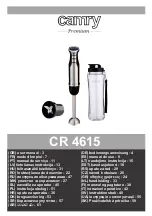
© 2014 Cisco | IBM. All rights reserved.
Page 3
Introduction
The Cisco Nexus
®
B22 Blade Fabric Extender for IBM
®
extends the Cisco Nexus switch fabric to the server edge.
Logically, it behaves like a remote line card to a parent Cisco Nexus 5000 or 6000 Series Switch. The fabric
extender and the parent Cisco Nexus 5000 or 6000 Series Switch together form a distributed modular system.
The Cisco Nexus B22 for IBM forwards all traffic to the parent Cisco Nexus 5000 or 6000 Series Switch over eight
10 Gigabit Ethernet uplinks. Low-cost uplink connections of up to 10 meters can be made with copper Twinax
cable, and longer connections of up to 100 meters can use the Cisco
®
10-Gbps fabric extender transceiver (FET-
10G). Standard 10-Gbps optics such as short reach (SR), long reach (LR), and extended reach (ER) are also
supported. Downlinks to each server are 10 Gigabit Ethernet and work with all Ethernet and converged network
adapter (CNA) mezzanine cards, allowing customers a choice of Ethernet, Fibre Channel over Ethernet (FCoE),
or Small Computer System Interface over IP (iSCSI) connections. Because the Cisco Nexus B22 for IBM is a
transparent extension of a Cisco Nexus switch, traffic can be switched according to policies established by the
Cisco Nexus switch using a single point of management.
The Cisco Nexus B22 for IBM provides the following benefits:
Highly scalable, consistent server access: This distributed modular system creates a scalable server access
environment with no reliance on Spanning Tree Protocol and with consistent features and architecture between
blade and rack servers.
Simplified operations: The availability of one single point of management and policy enforcement using upstream
Cisco Nexus 5000 Series Switches eases the commissioning and decommissioning of blades through zero-touch
installation and automatic configuration of fabric extenders.
Increased business benefits: Consolidation, reduced cabling, investment protection through feature inheritance
from the parent switch, and the capability to add functions without the need for a major equipment upgrade of
server-attached infrastructure all contribute to reduced operating expenses (OpEx) and capital expenditures
(CapEx).
The Cisco Nexus B22 for IBM integrates into the I/O module slot of a third-party blade chassis, drawing both
power and cooling from the blade chassis itself.
Network Diagram
Figure 1 presents a sample network topology that can be built using the Cisco Nexus B22 for IBM, 2000 Series
Fabric Extenders, and 5000 or 6000 Series Switches. In this topology, the Cisco Nexus 5000 or 6000 Series
Switch serves as the parent switch, performing all packet switching and policy enforcement for the entire
distributed modular system. The Cisco Nexus switch also serves as the only point of management for both
configuration and monitoring within the domain, making it simple to manage blade server and rack server
connections together.




































